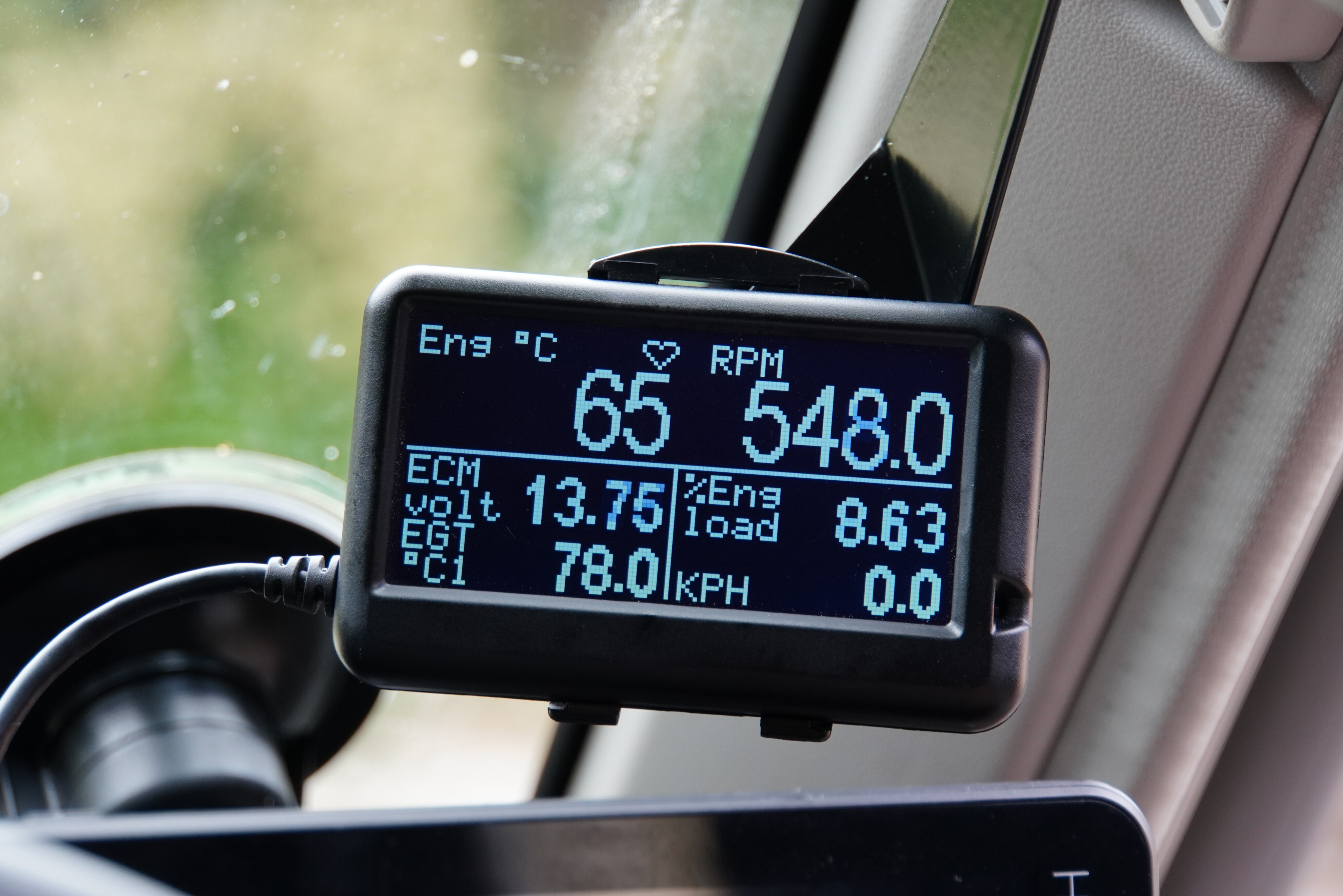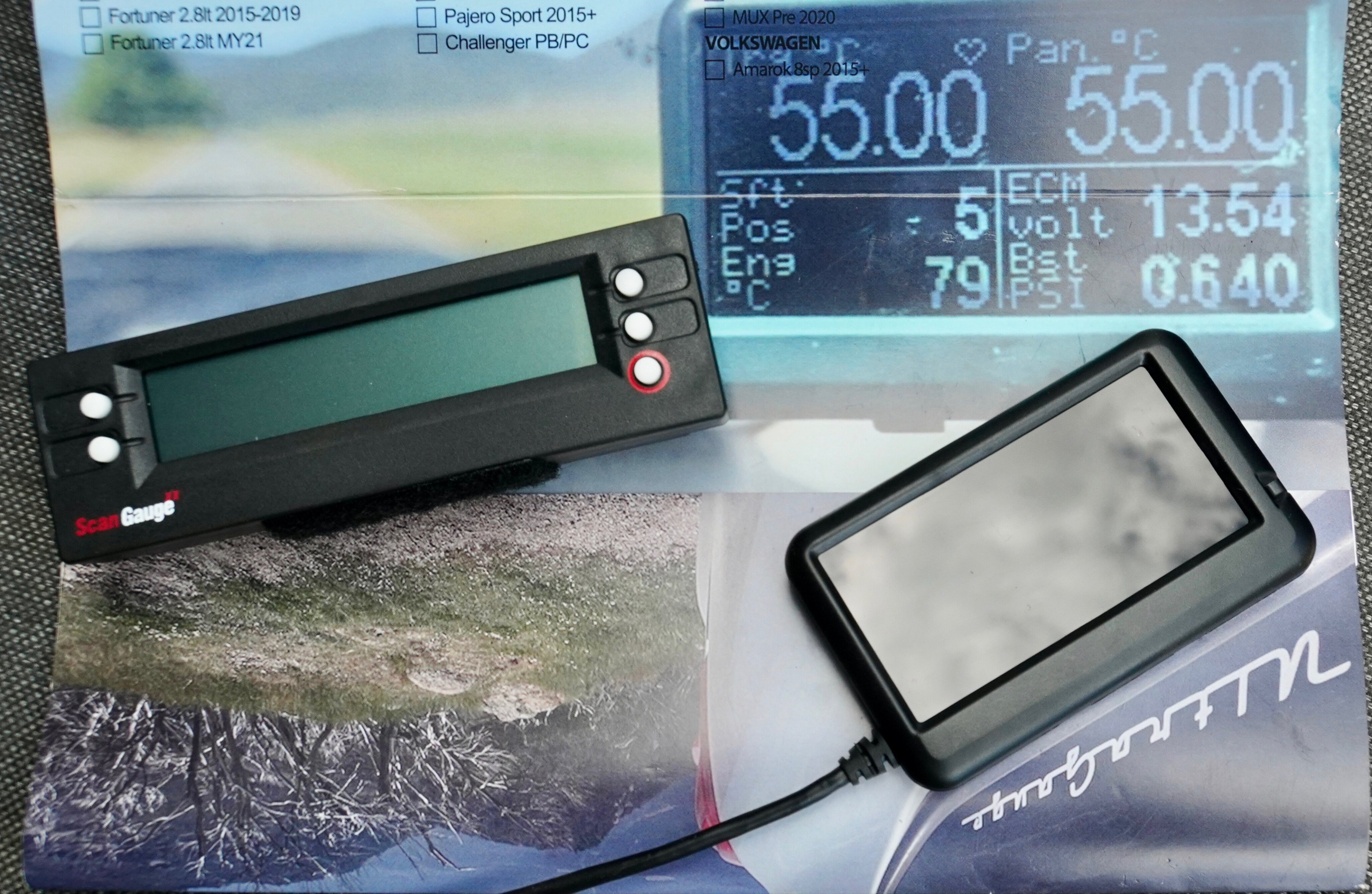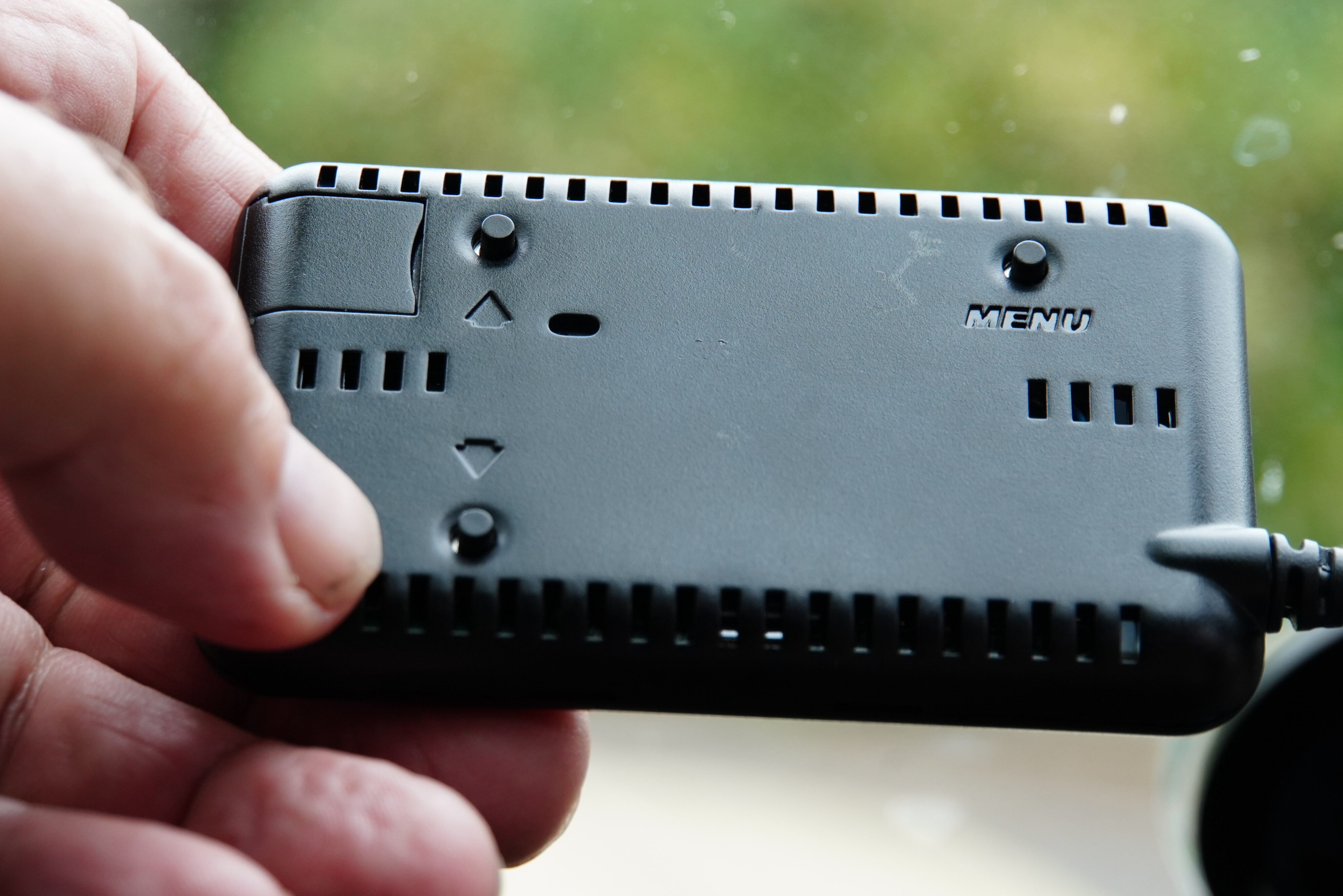
I had just received a ScanGauge2 to fit to my new Troopy when my son, Trent, dropped another OBD2 gauge on my workbench and said, “These are better, dad!”
With that comment I opened the box to find the UltraGauge unit along with a mounting bracket designed to attach to the A-pillar of the vehicle. The unit itself doesn’t come with any mounting kit; although, there are three options available from the website, the cheapest being a small patch of Velcro.

We fitted the gauge to the Troopy, plugged the cable into the OBD2 port located beneath the steering column, and attached the mounting bracket to the A-pillar using one of the grab-handle bolts as the mounting point. This setup so far holds the unit firmly in place, but we’ll see how it likes corrugations later on.
While the standard UltraGauge is designed to suit all makes and models, the Australian distributor pre-programmes some of the parameters to suit specific vehicles. In the unit fitted to my Troopy, this meant it immediately displayed engine temperature, engine speed (RPM), battery voltage, exhaust gas temperature (EGT), and engine load in percentage format. A small beating ‘heart’ at the top of the screen indicates that the gauge is monitoring everything correctly.
Electronics & Gadgets Buyers Guides
The number of engine and transmission functions the unit will display depends on what vehicle you have, the known codes it generates, and what you select to be shown. For example, on the 70 Series LandCruiser the UltraGauge shows RPM and vehicle speed (if selected), along with distance travelled since the trip was reset, average fuel economy in L/100km (or mpg), run-time in hours and minutes, and a whole lot more.
However, it doesn’t show turbo boost pressure, transmission oil temperature and other parameters, but if you drive a 200 or 300 Series, for example, you will be provided a more comprehensive number of gauges. Engine oil temperature and exhaust pressure, for example, are only supported by a few vehicle makes (less than one per cent).
The UltraGauge also displays any engine-trouble codes generated, and it proactively scans for potential or intermittent faults while you are driving and alerts you if trouble is found. If the vehicle’s annoying ‘check engine light’ comes on, the UltraGauge can turn it off easily and quickly.

The UltraGauge can display seven separate pages of gauges, and each page can independently be configured to display four, six or eight gauges. I’ve only used two pages with eight gauges displayed on each page. You can set the unit to automatically scroll through the different pages, or like me just have the first page displayed and then manually select the second page if desired. You can also select alarms for low fuel and more.
There’s a menu button and up and down buttons on the back of the unit. Once you’ve used each of the buttons and selected a couple of different gauges you’ll find it’s pretty easy to navigate the UltraGauge and to select different pages and gauges, and the appearance and location of said gauges on different pages. Using the same buttons, you can select a number of alarms that will trigger when a set parameter is exceeded.
A comprehensive web-based start-up guide provides all the information you’ll need to operate the UltraGauge and to tailor it to suit your requirements.





COMMENTS